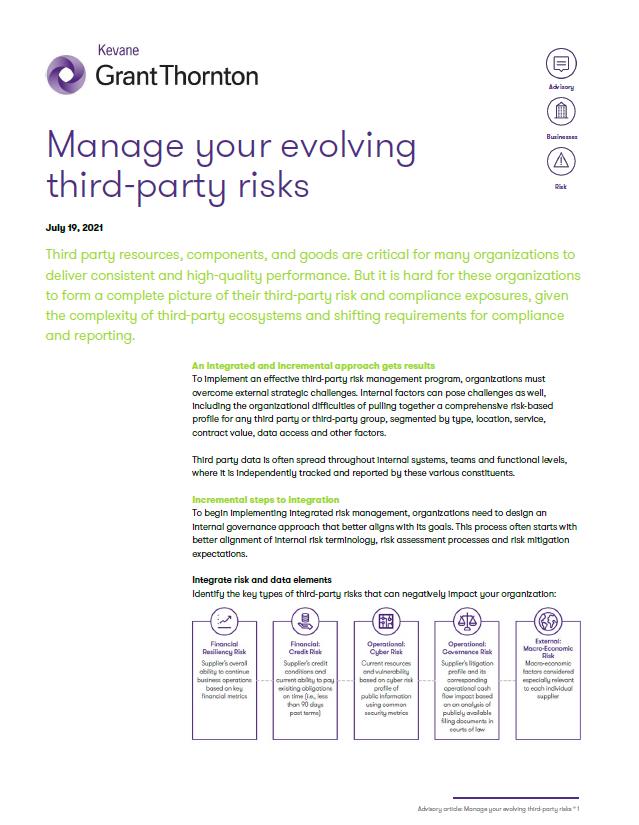-
Financial statements audits
Financial statement audits
-
Compliance audits
Compliance audits
-
Compilations and reviews
Compilations and audit
-
Agreed-upon procedures
Agreed-upon procedures
-
Tax compliance
Business Tax
-
Global mobility services
Through our global organisation of member firms, we support both companies and individuals, providing insightful solutions to minimise the tax burden for both parties.
-
Sales and use tax and indirect taxes
SUT/ VAT & indirect taxes
-
Tax incentives
Navigating the complex landscape of tax incentives in Puerto Rico can be challenging. Whether you're looking to benefit from the Export Services Act (Act 20), the Individual Investors Act (Act 22), or other incentives under Act 60, we provide tailored advice to help you maximize your tax benefits and ensure compliance. Let us help you unlock the potential of doing business in Puerto Rico.
-
Transfer Pricing
The laws surrounding transfer pricing are becoming ever more complex, as tax affairs of multinational companies are facing scrutiny from media, regulators and the public
-
International Business Center
Kevane Grant Thornton is an International Business Center within the Grant Thornton network. Our expert team provides integrated solutions to help Puerto Rico businesses navigate the complex issues that arise when developing global businesses.

-
Business consulting
Our business consulting services can help you improve your operational performance and productivity, adding value throughout your growth life cycle.
-
Business Risk Advisory
Risk is inevitable but manageable. We deliver relevant, timely and practical advices to aid organizations manage risk and improve business performance. We can help you identify, understand and manage potential risks to safeguard your business and comply with regulatory requirements.
-
Technology Advisory
We provide comprehensive solutions to safeguard your business and ensure operational resilience and compliance. Our expert team offers a range of technology advisory services designed to address your cybersecurity needs, enhance business continuity, and manage security effectively.
-
Transactional advisory services
Transactions are significant events in the life of a business – a successful deal that can have a lasting impact on the future shape of the organizations involved. Because the stakes are high for both buyers and sellers, experience, determination and pragmatism are required to bring deals safely through to conclusion.
-
Forensic and investigative services
At Grant Thornton, we have a wealth of knowledge in forensic services and can support you with issues such as dispute resolution, fraud and insurance claims.

An integrated and incremental approach gets results
To implement an effective third-party risk management program, organizations must overcome external strategic challenges. Internal factors can pose challenges as well, including the organizational difficulties of pulling together a comprehensive risk-based profile for any third party or third-party group, segmented by type, location, service, contract value, data access and other factors.
Third party data is often spread throughout internal systems, teams and functional levels, where it is independently tracked and reported by these various constituents.
Incremental steps to integration
To begin implementing integrated risk management, organizations need to design an internal governance approach that better aligns with its goals. This process often starts with better alignment of internal risk terminology, risk assessment processes and risk mitigation expectations.
Integrate risk and data elements
Identify the key types of third-party risks that can negatively impact your organization:

The biggest challenges you will face
Integrated risk management must be designed to drive effective decisions and directly address the organization’s biggest challenges in order to achieve effective third-party risk management and drive towards improved organizational resiliency.
Risk monitoring your high-risk third parties
By prioritizing threats and identifying third parties linked to business-critical and customer service functions, an integrated risk management approach can help organizations make sense of a fast-changing third-party risk ecosystem while driving synergies through other risk intelligence platforms. These platforms are often located in procurement, supply chain, enterprise risk management, compliance, and other areas. Organizations should conduct risk analysis and generate dynamic third-party risk intelligence; this helps organizations focus resources on their most important third-party risks.
Cost pressures (less budget, fewer resources)
Enterprise risk management, including underlying third-party risk management governance approaches and processes, often fail to meaningfully collect, connect, and assess third party data applicable to the entirety of the organization. Governance, Risk and Compliance analysis prepared with the data available to you, can be incomplete, at least from a third-party risk management perspective.
Informational gaps, along with process-based redundancies, foster various operational and governance inefficiencies which can be solved by a more integrated governance approach. Integrated risk management reduces the number of systems that must be explored separately and reduces the amount of time spent on risk assessment, risk monitoring and risk reporting, including front-side screening for due diligence to reduce inefficiencies for third parties already pre-qualified.
Managing subcontractors
A lean and integrated system reduces data duplication and noise. Both factors make it easier to manage third parties, but also to drill down to subcontractors at multiple levels.
Reporting and issue management
Integrated risk management increases the chances that issues will be reported, read and acted upon. With integrated risk management, issues can be tracked in a single system, informed by clean data, prioritized, and framed in ways that make them relevant to decision makers.
Communicating risk to business leaders
Risk must be framed in meaningful terms. Reports across all functions can note how quickly risks will materialize and what their economic impacts might be.
Gaining executive buy-in / lack of tone at the top
Integrated risk management can generate value and support by informing better high-level business decisions. It also gives executives a better platform to generate their own ideas and contribute to the success of the initiative, beyond simply evaluating it.
Duration of pre-contract due diligence activities
By creating vendor designations which indicate the amount and type of due diligence needed, and by creating reliable, up-to-date repositories of vendor information, an integrated system eliminates busywork.
A central focus
While the end goal of integrated risk management might seem ambitious, it is important to be nimble and consider how to leverage market-leading approaches while staying focused on long-term goals. Take an incremental approach that lowers short-term expectations while generating insights and advocates. Focus on building a better third-party risk scoring approaching and synchronizing data sources. This builds on small successes, and lets you measure those achievements, communicate results, and gather resources to achieve more valuable insight.
Organizations should anticipate some complexities and contingencies, but the core effort behind third party risk data integration is straightforward. It essentially pairs your resources with new solutions to get more value out of your third-party vendor data.
By better analyzing your data and resources with your existing infrastructure, you can bring true insights to the leaders that need to evaluate your supply chain and third-party risks.
Source: Grant Thornton library articles
We are committed to keep you updated of all developments that may affect the way you do business in Puerto Rico. Please contact us for assistance in relation to this or any other matter, we will be glad to assist you.


